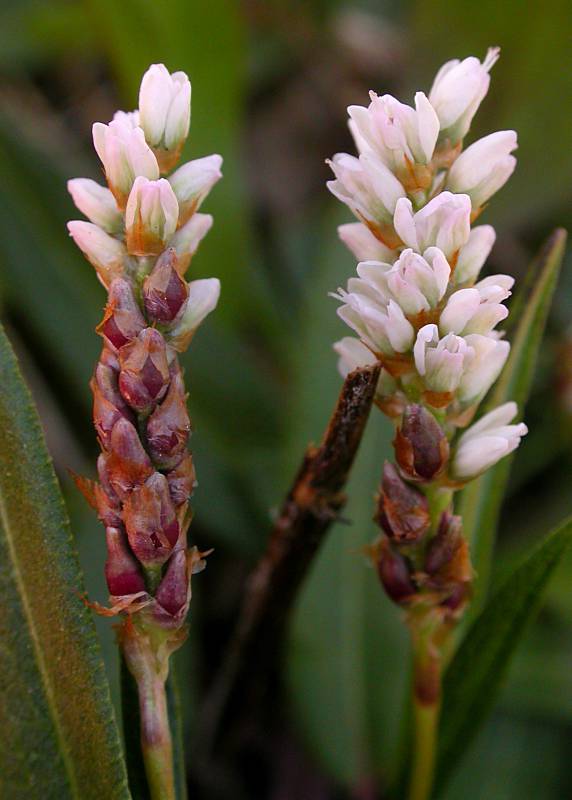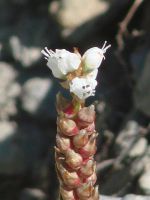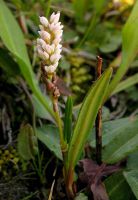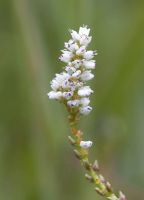Distribution: Occurring on both sides of the Cascades crest in northern Washington; Alaska to Oregon and Nevada, east to the Rocky Mountains, northern Great Plains, Great Lakes region, and northeastern North America.
Habitat: Damp areas, shady woods, meadows and streambanks at mid- to high elevations in the mountains.
Flowers: June-September
Origin: Native
Growth Duration: Perennial
Conservation Status: Not of concern
Perennial from a short rootstock, 1-several flowering stems 1-3 dm. tall.
Chiefly basal, long-petiolate, the blade narrowly oblong to oblong-lanceolate; stipules strongly sheathing, brown, 2-5 mm. long, oblique at the tip, not lacerate; stem leaves 2-4, much narrower than the basal leaves, reduced upward and becoming sessile.
Inflorescence a single, spike-like raceme 4-8 cm. long and 1 cm. broad, the lower flowers replaced by small pinkish to purplish bulblets, all flowers subtended by small bracts; normal flowers usually functionally imperfect on pedicles 2-4 mm. long, the white perianth 3-3.5 mm. long; stamens 8 when developed, the filaments as long to twice as long as the perianth; in the pistillate flowers the stamens rudimentary.
Achene with three sharp angles, dark brown, smooth, 2-3 mm. long, but usually not developing.
Separate from the similar P. bistortoides by the narrower inflorescence with bulblets replacing flowers on the lower portion.
Publication: Fl. Auvergne, ed. 2. 2: 516. 1800.
Persicaria vivipara (L.) Ronse Decr.
Polygonum viviparum L. [HC, ILBC4]
Polygonum viviparum L. var. macounii (Small ex J.M. Macoun) Hultén
PNW Herbaria: Specimen records of Bistorta vivipara in the Consortium of Pacific Northwest Herbaria database
WA Flora Checklist: Bistorta vivipara checklist entry
OregonFlora: Bistorta vivipara information
E-Flora BC: Bistorta vivipara atlas page
CalPhotos: Bistorta vivipara photos














